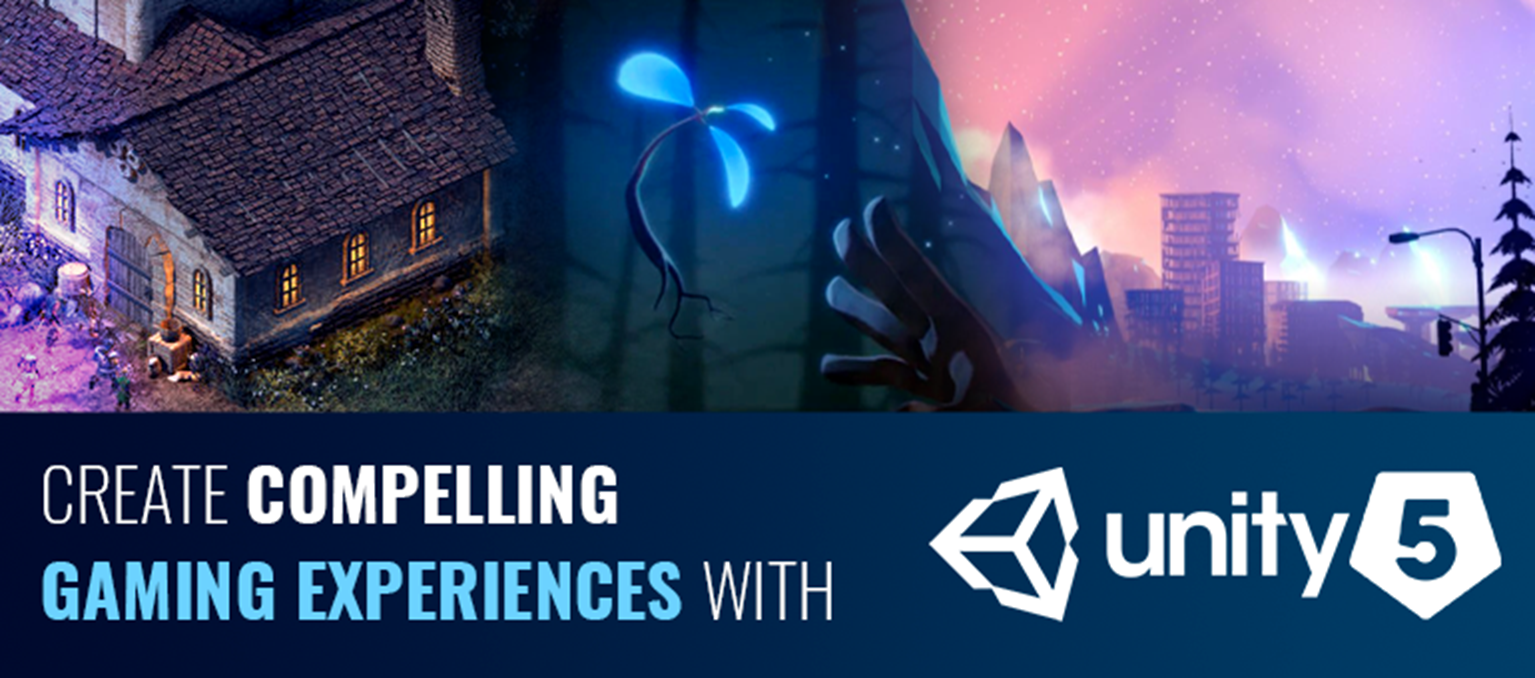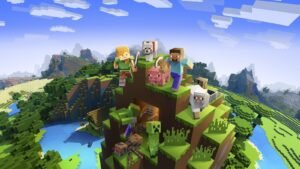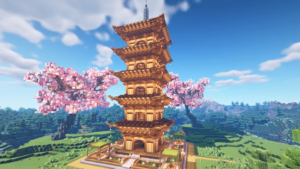Create exciting gaming experiences with newest Unity 5 features
Unity Software Inc. is an American video game software development company. Its first cross-platform game engine called Unity came out in 2005 and since then this leading game development platform has done the unthinkable with its every new version. This gaming platform is used by game app developers across the globe to create interactive and real-time games. During the course of time, several versions of the game engine have been introduced in the gaming industry. And, at the 2015 Game Developers Conference the new version was released with some noteworthy Unity 5 features and Unity updates. Going forward, we will elucidate a few valuable points that will tell you about the ways in which Unity 5 helps make compelling games for game lovers.
What are the powerful Unity 5 features that make it a bold release?
REAL-TIME GLOBAL ILLUMINATION
Global Illumination is a system that consists of a group of algorithms that works around indirect light that bounces from one surface to another rather than on direct light. This mechanism of Unity 5 is used by developers to add realistic lighting to 3D scenes that make the virtual world more realistic, connected, and immersive as the objects impact each other’s appearance.
LIGHTMAPPING
The light mapping on a plane, cube, and directional light in a game is quite life-like and impacts a game’s look and feel immensely. Therefore, when working with light mapping, it becomes essential for a developer to know which object has to be kept static and in motion and which light has to have its information baked. For different scenes, the lighting and calculations are controlled differently. The lighting information of the environments is baked into texture maps in complex scenes so that the calculation for the lighting is only required to be done once. Greater values of Lightmap resolution (texels or texture pixels per unit) create larger maps.
NVIDIA PHYSX 3.3 PHYSICS ENGINE
The upgraded Nvidia PhysX 3.3 physics engine brings massive performance improvements to 3D physics and makes the new version twofold faster than the previous version. It also removes smooth sphere collisions from both terrains and meshes in the environment of a video game.
ANTI-ALIASING
This technology has developed over time and shows observable effects in a game. Aliasing is the gradation of inclined lines of the images and it reduces the quality of an image. So, Anti-aliasing or AA is a technique that is used to remove the effects of aliasing by applying different methods. Super sample anti-aliasing (SSAA) is how it started where the image was supersampled and then rendered at a set resolution (8X the original resolution set) to remove aliasing. This method was improved by reducing the computing power and was called multisample anti-aliasing (MSAA).
The improved version created 3D models that looked a lot more smoother and finished. Then with the passing of time, temporal aliasing, internal texture aliasing, and spectral aliasing came into the picture. Unity 5 used a temporal anti-aliasing algorithm that has been very useful in the case of deferred rendering and HDR in the forward rendering path. The post-processing stack of Unity 5 uses the FXAA (Fast Approximate Anti-aliasing) and TAA (Temporal Anti-aliasing) algorithm. The former contains multiple quality presets and is suitable for slower desktops and console hardware while the latter is an advanced technique that gives finer and smoother edges in motion with the use of motion vectors.
DEPTH OF FIELD
A Camera lens focuses on a specific object or distance and not on objects nearer or farther from the camera. This out-of-focus or blurring of objects gives the viewer a sense of color, form, depth, and movement (visual cue) about the object’s distance. This post-processing effect simulates the focus properties of a camera lens or that of a human eye which is how Depth of Field is added to an action scene or other complicated scenes. The focus distance, aperture, focal length, and max blur size are controlled to grab the viewer’s attention. This technique impacts the look and feel of a scene in a game immensely.
SUN SHAFT
Volumetric light like God rays or sun shafts are common yet energizing image effects in a scene of a game. The shaft appears from the position of the sun in the viewer’s direction. The numerous factors that cause this effect are the particle material and texture, long particle life, large particle size, high particle speed, smooth alpha change over a lifetime, light emission, and stretched billboard render.
By nature, the particles do not illuminate their surroundings so light is added to the particle system to create a firefly effect to illuminate the environment and the objects around and create a realistic appearance. These cinematic effects enhance the visual quality of the particle effects and make the mobile games look less generic but amazing.
CINEMATIC IMAGE EFFECTS
Unity 5 came up with new image effects with its new version to make the scene and the game look and feel more realistic and interactive. Screen Space Reflections is one of the techniques used to calculate reflections by reusing screen space data. It allows the developers to obtain detailed reflections with accuracy. It costs a lot and so it is not preferred to be used for mobile games. A way to reduce its cost is to reduce the iteration cost and cut down the number of times the ray is tested against the depth buffer but while doing that, there are several other factors like overall depth, shorter reflections, and reduced precision that must be maintained.
COLOR GRADING
Color grading is performed using different Unity 5 tools (real-time HDR tools) to correct the color and luminance of an image. The different color grading tools are classified by Unity into 5 sections – Tonemapping, Basic, Channel Mixer, Trackballs, and Grade Curves. Tone mapping is remapping the HDR (high dynamic range) values of an image to a new range of values to make an image with an LDR (low dynamic range) appear to have a higher range. The post-processing stack in Unity supplies three tone mapping modes that are none, neutral, and filmic. Tone mapping and color Grading support texture LUT and other custom grading settings in Unity 5.
AUDIO MIXER
The Unity Audio mixer improves and controls the signal flow of audio in a game by mixing several audio sources and adding effects to it. Its Audio Window Mixer is a tree of Audio Mixer groups (a mix of audio, a signal chain) that lets one apply volume attenuation, insert effects, change volume levels, route signals into groups, change parameters of those effects and correct pitch. This is considered an asset that allows game programmers to create and use more than one audio mixer at a time. To complement it, It has a 4K video player that runs 360-degree videos for virtual reality and these videos can be imported and reproduced without any external assets.
REAL-TIME GRAPHIC RENDERING
The fifth version of Unity has an updated 3D real-time rendering engine with impeccable performance where developers could create images using the 3D data stored in the computer giving the gamers an immersive gaming experience.
Real-time graphic rendering takes place in video games when 3D images are calculated at a very high speed so multiple images appear in real time when players are interacting with the game achieving the highest degree of photorealism at a speed of 24 frames/sec and creating the illusion of movement. There’s also a sprite renderer to render sprite images in 2D and 3D scenes.
Here is the detailed Video of unity 5 features
OTHER TOOLS
There are several other new tools like Timeline and hire game designers that allow developers to drag-and-drop animations into games and Cinemachine is a smart camera system within games, Autodesk’s 3DS Max and Maya tools streamline asset sharing in-game iteration process, Physically-based Standard Shader to make your materials look consistent in any lighting environment, HDR Reflection Probes enhance visual fidelity, and the WebGL exporter provides the web developers with the ease to publish their video games on the web.
All things considered, Unity 5 has inspired young and skilled programmers to create exciting and engaging 3D cross-platform video games for a larger audience across the globe. With its multi-platform engine and new development tools, technologies, and features, developers have become not just capable but confident of delivering a quality product to the client and offering the players an unmatched gaming experience.


















